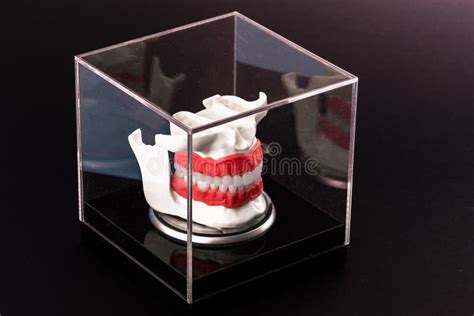In the realm of profound introspection and enigmatic contemplation lies an extraordinary phenomenon that captivates the imaginations of thinkers and dreamers alike. It is a multifaceted realm wherein intangible aspirations meld seamlessly with corporeal existence, creating an awe-inspiring entity that transcends traditional boundaries. This captivating spectacle, which remains hidden within the depths of one's essence, can only be described as the embodiment of ethereal marvels ingrained within the physical vessel.
Embracing the notion of perception beyond conventional lenses, this enigmatic occurrence defies categorization while constantly evolving. It challenges the depths of human comprehension, evoking a mélange of emotions that range from intrigue and curiosity to profound inspiration. How is it possible for ethereal notions to infiltrate the very fabric of our being, forming a mosaic of captivating reflections that intertwine with our reality? This question, one that relentlessly lingers within the corridors of our consciousness, beckons exploration in order to unravel the intricate tapestry that weaves these dreams of glass into our existence.
Within the uncharted territories of our collective consciousness lies a myriad of fantastical encounters that manifest in elusive whispers, sporadic flashes, and conspicuous signs. These ethereal manifestations, akin to fragments of a hazy reverie, bestow upon us the opportunity to delve into unexplored realms of self-discovery. They are the hallowed whispers of our most treasured dreams, yearning to be realized, yet embedded within the very veins that perpetuate our existence. As we traverse the labyrinthine maze of our subconscious, we encounter glimpses of these dreams encased in a delicate sheath of glass, shimmering with the untapped potential of our untold stories.
The Historical Evolution of Glass Implants

Throughout the ages, humans have sought innovative ways to enhance their physical bodies. One such revolutionary and intriguing avenue is the use of glass implants. This captivating exploration delves into the history of glass implants, uncovering their origin, evolution, and significance in various civilizations.
- Ancient Beginnings: Glass implants can be traced back to ancient civilizations, where artisans experimented with incorporating glass into the human body. Although the precise techniques and motivations behind these early practices remain shrouded in mystery, evidence suggests that the ancient Egyptians and Romans were among the pioneers in this field.
- Renaissance Advancements: The Renaissance period witnessed a resurgence of interest in glass implants. Artists and anatomists alike explored the potential of glass as a material for anatomical displays and medical experiments. During this era, glass implants were utilized not only for functional purposes but also as decorative elements, highlighting both the aesthetic and scientific aspects of this fascinating practice.
- Scientific Breakthroughs: With the advancements in medical science during the 18th and 19th centuries, the focus on glass implants shifted towards medical applications. Surgeons and researchers began experimenting with glass-based prosthetics and implants to replace or augment body parts. These pioneering efforts brought about significant advancements in the field of medical technology.
- Contemporary Innovations: In the modern era, glass implants have evolved to meet the ever-growing demands of medical and aesthetic purposes. With advancements in materials engineering and surgical techniques, glass implants now offer a wide range of possibilities, from enhancing bone regeneration to providing optical benefits for individuals with visual impairments. Additionally, artists and designers have embraced glass implants as a means of artistic expression, further blurring the line between functionality and aesthetics.
The history of glass implants is a testament to humanity's relentless pursuit of innovation and self-improvement. From ancient civilizations to the present day, the intriguing and often surprising applications of glass implants continue to fascinate and inspire researchers, medical professionals, and artists alike.
The Concept of Body Modifications with Fused Glass
In this section, we delve into the fascinating concept of incorporating fused glass into body modifications. This unique artistic practice involves the integration of glass elements into the human form, resulting in visually captivating and thought-provoking pieces. We explore the idea of glass-fused body modifications as a form of artistic expression and self-representation, allowing individuals to push the boundaries of traditional aesthetics and explore the interplay between human bodies and glass as a medium.
Through the fusion of glass and the human body, individuals are able to create a tangible connection between art and the physical self. The use of glass as a material in body modifications offers a myriad of creative possibilities, from small, delicate accents to bold, statement-making pieces. These glass inclusions, whether subtly incorporated into existing body art or intentionally crafted as standalone modifications, can serve as symbolic representations of personal narratives, beliefs, or even cultural traditions.
A fascinating aspect of glass-fused body modifications is the inherently dynamic and transformative nature of glass itself. Glass is a material that encompasses both fragility and resilience, thus mirroring the human experience. The inclusion of fused glass elements in body modifications not only adds visual interest but also represents the potential for growth, transformation, and the embracing of change.
| Image | Caption |
| Image | Caption |
Furthermore, the concept of glass-fused body modifications raises profound questions about the intersection of art, beauty, and the human form. By altering the body through the incorporation of glass, individuals challenge conventional notions of what is considered aesthetically pleasing or socially acceptable. This exploration pushes boundaries, highlighting the subjective nature of beauty and the power of personal expression.
In conclusion, the concept of glass-fused body modifications offers a captivating exploration of the potential for artistry and self-expression. By integrating glass elements into the human form, individuals can create truly unique and visually stunning representations of their personal narratives and identities. Additionally, the use of glass challenges societal norms and invites contemplation on the fluidity of beauty and the ever-evolving nature of human self-representation.
Unleashing Creativity: Glass Implants as Artistic Expression

In the realm of artistic expression, there exists a unique avenue that transcends traditional mediums and explores the potential of glass implants. This unconventional form of creative expression delves into the realms of the human imagination, intertwining the worlds of art and science. By blending the ethereal qualities of glass with the profound depths of the human body, artists are able to unleash their creativity in unprecedented ways.
The fusion of glass implants and artistic expression allows for the manifestation of ideas and emotions that may otherwise remain intangible. Through the manipulation of light, texture, and form, this medium presents an opportunity to captivate the senses and evoke profound reactions. The glass implants, whether they take the form of delicate shards or intricate patterns, serve as a canvas for artists to imprint their visions onto the human body.
One notable aspect of glass implants as artistic expression is their versatility. From abstract designs to intricate mosaics, each implant is a testament to the artist's unique perspective and creative prowess. The interplay between the translucent nature of glass and the human body's organic composition creates a mesmerizing juxtaposition. This symbiosis encourages viewers to perceive beauty in unexpected places and challenges the boundaries of conventional aesthetics. |
Moreover, the use of glass implants as a form of artistic expression brings forth the significance of personal connection. Unlike traditional art forms that exist separate from their creators, these implants become a part of the body, intimately intertwined with the individual. This integration allows for a deeper level of self-expression, enabling individuals to communicate their innermost thoughts and emotions through a tangible and lasting medium.
As with any form of artistic expression, glass implants offer a platform for cultural dialogue and exploration. This medium has the power to transcend language barriers and societal norms, serving as a universal language of creativity and imagination. It invites individuals from all walks of life to engage in a collective conversation about the boundaries and possibilities of art, pushing the boundaries of what is considered conventional.
In conclusion, glass implants have emerged as a captivating medium for artistic expression, allowing individuals to unleash their creativity in unique and awe-inspiring ways. Through the fusion of glass and the human body, artists are able to evoke emotions, challenge societal norms, and foster cultural dialogue. By embracing this avant-garde form of artistic expression, we have the opportunity to explore the depths of our imagination and redefine the boundaries of art. |
The Science of Glass Implants and Compatibility with the Human Body
Within the realm of biomedical innovation, a captivating subject that invites scientific study and exploration revolves around the use of glass implants and their harmonious coexistence with the intricate human physiology. This fascinating field delves into the intricate mechanisms and factors that govern the interaction between glass materials and the human body, ultimately leading to potential applications for medical advancements. This section sheds light on the science behind glass implants and elucidates the crucial aspect of compatibility with the human body.
One fundamental area of interest lies in comprehending the structural properties of glass implants and how they align with the complex composition and behavior of the human body. Glass materials used for implants can range from bioactive glasses to biocompatible glass-ceramics, each possessing distinct characteristics that determine their suitability for specific medical purposes. The interplay between glass implants and the human body involves a multitude of factors, including the biomaterial's mechanical properties, surface chemistry, and surface interaction with cells and tissues.
| Aspect | Description |
|---|---|
| Mechanical Properties | The mechanical strength, resilience, and elastic modulus of glass implants are essential factors in ensuring their long-term stability and integration within the human body. |
| Surface Chemistry | The chemical composition and structure of the glass implant's surface play a critical role in determining its interaction with biological entities, such as proteins, cells, and tissues. |
| Biological Response | The biological response triggered by the presence of a glass implant involves a complex interplay between inflammatory reactions, tissue regeneration, and cellular interactions, all of which contribute to the implant's compatibility and integration with the body. |
Advancements in material science and biotechnology have paved the way for tailoring glass implants to exhibit optimal compatibility with the human body. Researchers and engineers continuously strive to enhance the performance and biocompatibility of glass materials through various strategies, including surface modifications, the incorporation of bioactive elements, and the development of novel fabrication techniques. These endeavors aim to overcome challenges such as immune responses, tissue rejection, and implant degradation, ultimately enhancing the reliability and success rates of glass implants.
Understanding the science behind glass implants and their compatibility with the human body holds vast potential for revolutionary medical applications. From bone regeneration to tissue engineering and implantable medical devices, the knowledge gained from exploring the intricate interplay between glass materials and the human body opens up new avenues for improved healthcare and quality of life.
Challenges and Risks of Implanting Glass into the Human Body

In this section, we will explore the various obstacles and potential dangers associated with the implementation of glass materials in the human anatomy. The integration of glass into the body poses significant challenges and risks that necessitate thorough examination and consideration.
One of the primary concerns is the compatibility of glass implants with the surrounding organic tissues. The body's immune response may perceive foreign materials such as glass as a threat, leading to inflammation, rejection, or other adverse reactions. Ensuring biocompatibility and minimizing the risk of rejection are crucial factors in the success of glass implantation.
Another challenge lies in the structural integrity and fragility of glass. The human body undergoes constant movement, both internally and externally, which can put stress on implanted glass objects. The potential for fractures, cracks, or shattering poses significant risks to the patient's well-being and may require replacement or removal of the implant.
Furthermore, the transparency of glass, although desirable in various applications, can present issues when it comes to monitoring the implant and detecting potential complications. Unlike conventional materials, such as metals or ceramics, glass does not reveal internal changes easily. Novel techniques and technologies are required to enable effective monitoring and early identification of any problems that may arise.
Additionally, the sterilization and cleanliness of glass implants are critical considerations. Maintaining a sterile environment is essential to avoid infections and ensure successful integration within the body. The meticulous handling and storage of glass implants, along with appropriate sterilization procedures, are vital to mitigate associated risks.
Finally, the long-term effects of glass implants on the body remain a topic of ongoing research and investigation. While some studies suggest the biocompatibility and stability of certain glass materials, it is essential to gather more data to fully understand any potential long-term consequences or complications that may arise from glass implantation.
Glass Implants and the Future of Enhancing the Human Body
In this section, we will delve into the concept of integrating glass implants into the human body as a means of enhancing its capabilities. By exploring this futuristic vision, we will examine how incorporating glass materials can offer intriguing possibilities for human augmentation and transformation.
Glass implants open up avenues for enhanced sensory perception, improved cognitive function, and innovative aesthetic modifications. These bio-inspired advancements introduce a shift in the conventional understanding of the human body, pushing boundaries to create a new realm of human potential.
Imagine a world where individuals possess the ability to see beyond the limitations of natural vision, equipped with glass implants that augment their visual capabilities. These implants offer the potential to enhance color perception and clarity, enabling individuals to perceive a broader spectrum of colors and experience an entirely new visual dimension.
Furthermore, glass implants can revolutionize cognitive abilities, acting as a conduit for storing and accessing vast amounts of information. By integrating glass materials into the brain, individuals could potentially expand their memory capacity and access knowledge instantly, transforming the way we learn, interact, and understand the world around us.
Apart from the functionality aspect, glass implants present a fascinating opportunity for aesthetic expression. The ability to modify one's appearance with glass implants opens up a new era of self-expression and identity exploration. From subtle enhancements to bold and striking designs, the integration of glass in the body offers alternative possibilities for personal transformation and the creation of unique visual identities.
Undoubtedly, glass implants possess vast potential in terms of pushing the boundaries of human enhancement. However, it is crucial to weigh the ethical implications, ensuring that these advancements are developed and implemented with careful consideration for individual autonomy, privacy, and safety.
In the next section, we will explore the technological advancements and scientific breakthroughs that are paving the way for the realization of glass implants and their impact on the future of human enhancement.
Cultural Perspectives: Glass Implants in Different Societies

Exploring the cultural beliefs and practices surrounding glass implants in various societies offers a fascinating insight into the diverse perspectives on body modification and enhancement. From ancient rituals to modern subcultures, the ways in which different cultures embrace or reject the idea of glass implants unveil a multifaceted tapestry of human experiences and values.
In traditional societies, glass implants often bear symbolic significance deeply rooted in religious or spiritual beliefs. These cultural practices, passed down through generations, manifest the eternal connection between the physical body and the spiritual realm. The use of glass implants in rituals and ceremonies serves as a physical representation of devotion, transformation, or protection, mirroring the aspirations and beliefs of the respective societies.
In contrast, modern societies witness the emergence of glass implants in the context of body modification subcultures. These subcultures, driven by self-expression and the pursuit of uniqueness, view glass implants as a means of personal empowerment and identity construction. Through intricate designs and placements, individuals assert their individuality and challenge societal norms, reflecting the fluidity of contemporary cultural values and the desire for self-expression in an increasingly globalized world.
Moreover, cultural perspectives on glass implants can also be shaped by practical considerations and socio-economic factors. In societies where medical advancements are more accessible, glass implants may be seen as a form of medical innovation or a solution to physical limitations. Conversely, in societies with limited access to healthcare or cultural stigma surrounding body modifications, the acceptance or rejection of glass implants can reflect the prevailing socio-economic conditions and cultural attitudes towards personal choices and bodily autonomy.
| Society | Cultural Perspectives on Glass Implants |
|---|---|
| Ancient Mesopotamia | Symbol of divine protection and spirituality |
| Contemporary Western Subcultures | Expression of individuality and defiance of societal norms |
| Medical Innovations in Japan | Scientific advancements and enhancing physical abilities |
| Conservative Societies | Stigma and cultural taboos surrounding body modifications |
Examining the cultural perspectives on glass implants in different societies reveals a rich tapestry of beliefs, values, and social dynamics. From ancient rituals to modern subcultures, the use of glass implants underscores the intricate relationship between culture, individual identity, and societal norms, shedding light on the diverse ways in which humans navigate the complexities of self-expression and personal empowerment.
Glass Implants in Popular Culture: From Movies to Music
In this section, we will explore the presence of glass implants in various forms of popular culture, ranging from movies to music. These implants, made of glass-like materials, have captivated the creative minds of artists and filmmakers, infiltrating their narratives and lyrical compositions with intriguing symbolism and futuristic concepts.
Movies:
- "Sci-fi Blockbusters: A Glimpse into the Future"
- "Glass Implants as Transhuman Enhancements"
- "Metaphorical Representations: Seeing Beyond the Surface"
In the realm of cinema, glass implants have frequently appeared in science fiction blockbusters, offering viewers a glimpse into an imagined future where new technologies transform humanity. These implants often serve as transhuman enhancements, providing characters with enhanced vision or other sensory abilities. Moreover, glass implants are also utilized as metaphorical representations, allowing filmmakers to explore deeper themes of perception and identity, urging audiences to see beyond the surface and question the boundaries of what it means to be human.
Music:
- "Melodic Reflections: Glass Implants in Song Lyrics"
- "Sonic Landscapes: Incorporating Glass-like Sounds"
- "Glass Implants as Symbolic Elements in Music Videos"
From lyrics to music videos, glass implants have found their place in the realm of music as well. Songwriters often include references to glass implants in their lyrics, using them as metaphors for vulnerability, transparency, and personal transformation. Musicians have also incorporated glass-like sounds and melodies into their compositions, creating sonic landscapes that evoke a sense of fragility and ethereality. In music videos, glass implants serve as symbolic elements, visually representing the themes and emotions explored in the songs.
Through the examination of these examples from movies and music, we can appreciate the widespread influence of glass implants on popular culture. Whether as speculative technologies or symbolic motifs, these captivating elements continue to inspire and ignite our imagination, inviting us to contemplate the potential future of human evolution and the boundaries of our own perceptions.
The Morality Debate Surrounding Glass Implants within Human Anatomy

In this section, we will delve into the ethical considerations and discussions surrounding the practice of implanting glass devices into the human body. This contentious topic has sparked intense debate among scientists, medical professionals, and philosophers alike. Examining the complex web of moral implications, we aim to shed light on the various arguments surrounding the acceptance or rejection of glass implants from an ethical perspective.
FAQ
What is the article "Dreams of Glass Embedded in the Body: A Fascinating Exploration" about?
The article "Dreams of Glass Embedded in the Body: A Fascinating Exploration" delves into the concept of dreams where individuals imagine having shards of glass embedded in their bodies. It explores the various interpretations, psychological meanings, and possible implications of such dreams.
Why do people dream about having glass embedded in their bodies?
There are several theories as to why people might dream about having glass embedded in their bodies. Some psychologists believe that these dreams symbolize feelings of vulnerability or emotional fragility. Others interpret them as a representation of difficult or painful experiences that the dreamer has encountered. It could also be related to the fear of being hurt or betrayed by others.
Are there any cultural or historical references to dreams of having glass in the body?
Yes, dreams of glass embedded in the body have been present in various cultures and traditions throughout history. In ancient folklore, such dreams were often associated with mysticism and believed to have prophetic or spiritual meaning. Some cultures also interpreted these dreams as a metaphor for the soul being shattered or the need for inner healing.
Can dreams of glass embedded in the body have a positive interpretation?
While dreams of glass embedded in the body are often associated with negative emotions or fears, they can also have positive interpretations. Some psychologists suggest that these dreams may symbolize the dreamer's strength and resilience, as glass is known for its transparency and durability. Additionally, they could signify a process of self-discovery and transformation, where the individual overcomes obstacles and emerges stronger.



